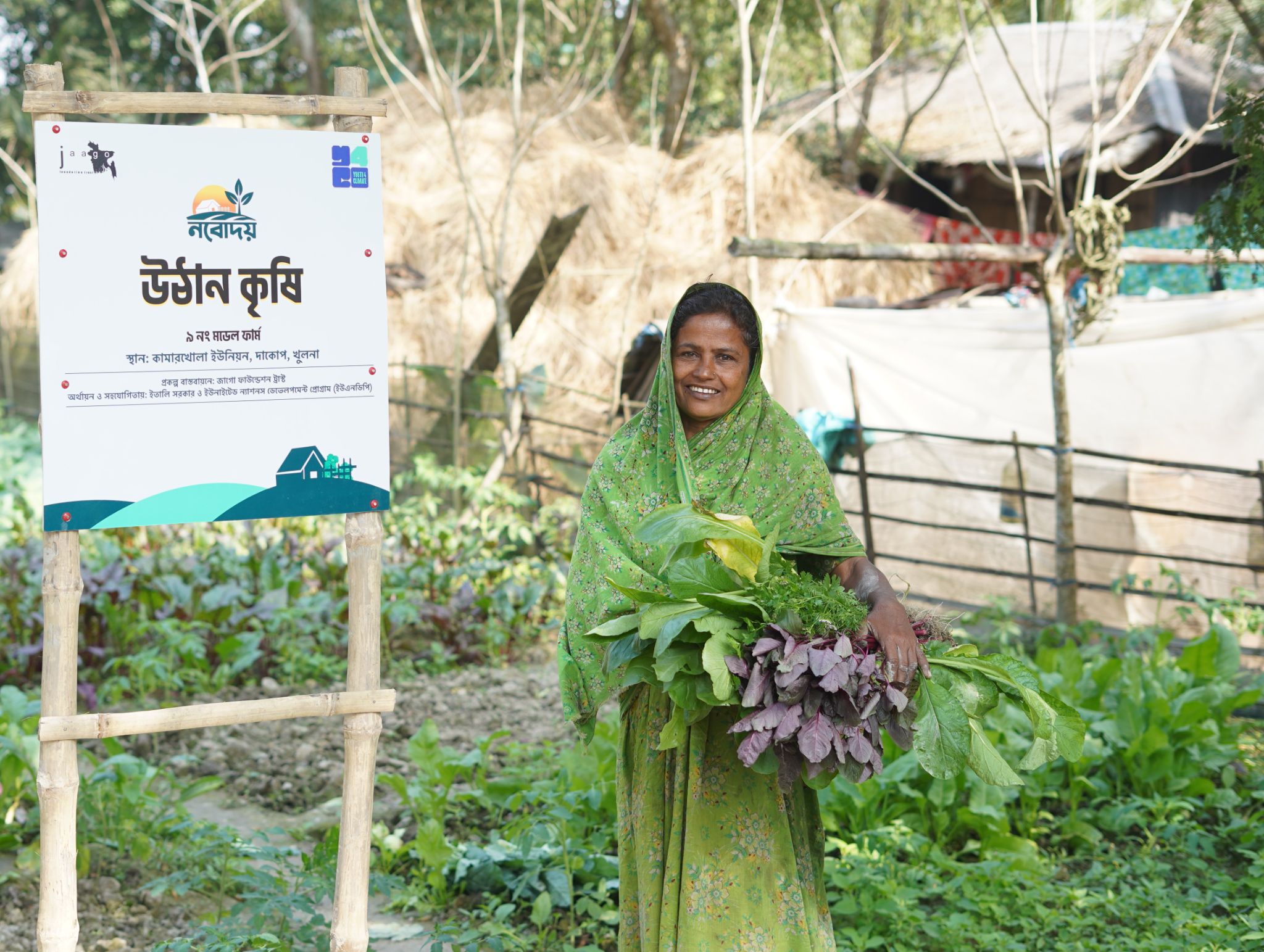
In a region where saltwater intrusion and flash floods have long dictated the fragility of daily life, the “Nobodoy: Alternative Climate Adaptive Livelihood for the Vulnerable Communities” project is reshaping not only how communities survive—but how they lead. Operating in the deeply climate-impacted Kamarkhola Union of Dacope Upazila in Khulna, the project has emerged as a national model for climate resilience, community-led transformation, and women-driven development.
Women now form the majority of Bangladesh’s agricultural labor—around 68% of the female labor force works in agriculture, including planting, harvesting, post-harvest processing, and processing fisheries and livestock (Daily Observer). Yet, they remain largely unrecognized: only 26.2% of employed women are formally counted in agriculture compared to 19.2% of men (The Daily Star). Across rural districts, a staggering share of women labor remains unpaid and excluded from official support such as farmer cards, credit, and training (alrd.org). Studies show that while female labor represents nearly 28% of total farm labor, technical inefficiencies persist due to inadequate training and lack of recognition (ResearchGate).
At the core of this transformation is capacity building. The project’s targeted training programs and technical support catalyzed a massive behavioral shift in agriculture: climate-smart techniques surged from just 3% adoption at baseline to an astounding 92.9% at endline. With pest management and soil quality drastically improved, even cattle damage—a long-standing challenge—has significantly declined. These advances underscore a remarkable alignment with national goals to improve agricultural productivity and enhance food security in climate-affected regions.
Model farms, established with 12 participants, acted as community learning hubs, inspiring 63.6% of neighboring households to adopt homestead gardening.

Perhaps the most profound shift lies in community awareness. In a region where early marriage, gender-based violence (GBV), and gender discrimination are often silenced by tradition or trauma, Nobodoy initiated powerful community-led dialogues. Courtyard sessions on climate-induced child marriage and GBV reached 88% participation, with awareness levels soaring from 25.6% at baseline to 98.2% at endline. This marks a seismic change in public consciousness and a foundational step toward more gender-equitable societies.
Innovative outreach tools such as interactive theater shows drew 76% participation and became catalysts for widespread behavioral shifts in sanitation, hygiene, and preparedness. Waste disposal practices transformed radically: open dumping fell from 66.1% to 2.9%, while composting rose from 27.4% to 65.5%. Disposal into open water dropped from 56.1% to just 5%, safeguarding vital water sources. These are not just indicators of awareness—they are proof of a cultural shift toward sustainability.

In a country where women comprise up to 68% of the informal agricultural workforce, yet remain largely invisible in national economic accounts, the Nobodoy project boldly challenges and redefines the narrative. Women who once toiled unseen are now cultivating climate-smart farms, managing waste systems, mentoring neighbors, and advocating for social reform.
This transformation directly advances SDG 1 (No Poverty), SDG 5 (Gender Equality), and SDG 13 (Climate Action), while simultaneously contributing to Bangladesh’s national agenda for climate adaptation and inclusive rural growth.
By addressing the root causes of vulnerability—be it climate stress, poor health, social norms, or exclusion from economic systems—Nobodoy strengthens not just individuals, but the entire ecosystem of rural resilience.

Globally, Bangladesh is often seen as a climate victim—but projects like Nobodoy reposition it as a climate innovator. The dramatic increase in community engagement, knowledge, and adaptive behavior within just one project cycle offers a replicable model for other vulnerable geographies around the world.
The project exemplifies how gender-responsive, climate-smart solutions, when driven by community ownership and supported by thoughtful programming, can generate outsized, sustainable impact.